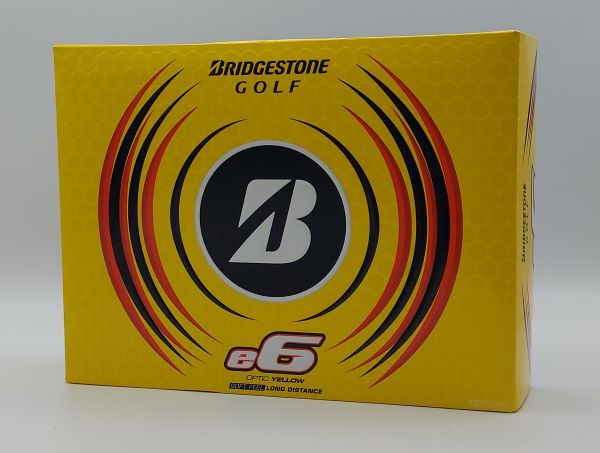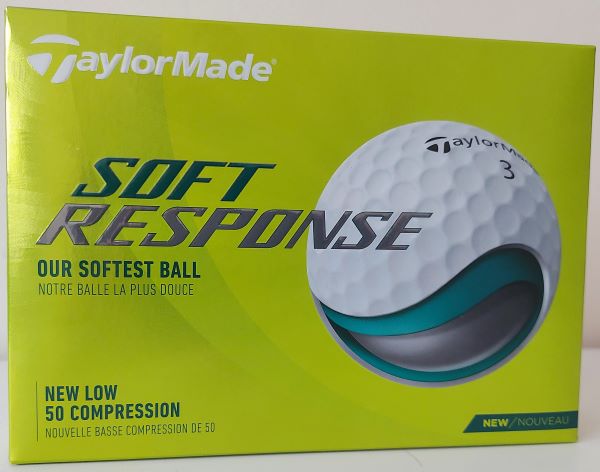If you landed here you have probably an idea about the ball you are looking for. You either like the soft feel or distance, or the price low compression golf balls provide. As far as I know, you might like all of the above. Either way, you are in search of the best low compression golf balls on the market. If that is the case, you are in luck, you came to the right place.
Looking for a golf ball can be overwhelming and time-consuming, I know from experience. However, at the end of the day, it all pays out when you find it. Anyway, what is compression in golf balls? In case you are wondering, it is a measure of how much a ball deforms under impact. There is a correlation between compression and swing speed which can affect your ball choice. Nevertheless, you came here to check out low compression balls, so here we go.
5 Best Low Compression Golf Balls
So, in order to be categorized as a low compression ball, the compression rating of a ball has to be under 65. In the category, we mostly find two-piece ionomer golf balls with some exceptions here and there. Without further introduction, here are the best options you can get.
Note: I have tested all of these balls and I am suggesting them based first on my experience and second on the users and industry insights.
Here’s a little transparency: This post contains affiliate links. If you click and make a purchase, I may receive a small commission. Don’t worry, there’s no extra cost to you. It’s a simple way you can support my mission to bring you quality content.
Bridgestone e6
The most popular Bridgestone golf ball is a reliable choice for golfers seeking a soft feel. With a compression rating in the mid-40s, it is not the softest ball on the list. You can find it often on promotions which makes it appealing for deal seekers. You can check the full review here.
Best for: Distance Control

PROS
-
Distance
-
Price
-
Soft Feel
CONS
-
Lack of Spin
-
Not for Faster Swing Speeds
Callaway Supersoft
This is the most popular and lowest compressed ball on the list with a compression rating around 40. It is Callaway’s best seller year after year and it comes at a reasonable price. Its soft feel is hard to beat and it is as reliable as balls get. You can check the full review here.
Best for: Durability

PROS
-
Distance
-
Durability
-
Price
CONS
-
Lack of Spin
-
Not for Faster Swing Speeds
Srixon Soft Feel (Editor’s Choice)
On this list, this is the ball with the most balanced performance. Its compression rating of 60 is the highest on this list. However, that does not take away from its softness. Its price is only beaten by the Vice Drive, which makes this ball appealing. You can check the full review here.
Best for: Balanced Performance

PROS
-
Distance
-
Durability
-
Price
CONS
-
Not for Faster Swing Speeds
TaylorMade Soft Response
This golf ball stands out on this list for two reasons. First, it is a three-piece ball and second, it is the most expensive choice. The price is higher compared to other balls on the list, but fair since it is a three-piece ball. With a compression rating of 50, it is the softest ball among TaylorMade ball models. You can check the full review here.
Best for: Distance

PROS
-
Distance
-
Soft Feel
CONS
-
Not for Fast Swing Speeds
-
Price (Compared to List)
Vice Drive
The only direct-to-consumer golf ball on this list is also the cheapest. Vice makes very good golf balls that are cheaper on average compared to the big brands. However, their quality and performance are at a level with the rest. Also, the more boxes you buy on Vice’s website, the cheaper the ball gets. You can check the full review here.
Best for: Affordability

Bonus: Callaway Supersoft MAX
This golf ball is a copy of the Supersoft ball with one twist, it is bigger. Don’t worry, it is perfectly legal to play as it conforms to the size regulations. This makes it easier to hit and therefore can bring more joy to your round of golf. You can check the full review here.
Best for: Beginners

Key Factors to Consider
When you are choosing a low compression golf ball you should pay attention to some factors. Besides compression, which is the obvious one, factor in the feel, longevity, and value. When you combine them all together, you can get closer to your choice. Knowing what you want out of a ball and how it can fit with your playing style is crucial.
- Compression rate: This is the starting point and you have to know low compression golf balls do not have the same compression rating. to be fair, there is not going to be a great difference, but some are less compressed than others. What this means, some balls need less strength to get compressed properly and thus go farther.
- Soft feel: This is a tricky one since some balls will feel softer than others no matter the compression rating. Granted, it is not going to be a big difference in the same category. This is more of a personal preference than anything else. It might require trying a few different ball models.
- Durability: It is important because it can affect a few things like performance and your wallet. The longer your ball stays in good shape, the longer you can play it without a significant drop in performance. Also, the longer you play the same ball, the longer you can avoid the trip to the golf shop to buy a new box.
- Price: There are cheaper golf balls that provide good quality and are reliable. This category is in general less expensive, but even among these balls there are better options for the paid price. Additionally, if you don’t care too much about performance you can save good money in the long run.

What to Expect on the Course
All right, the reality is balls with different compressions will perform differently. It is not a surprise that professional golfers play with premium tour-level balls. Those balls fit their playing styles and do what they expect them to do. Premium balls are all in the medium to high compression category and perform quite differently. Nonetheless, here is what you can expect from low compression golf balls on the course.
- Distance: If you are a slow to medium swing speed golfer, these balls can work fine for you. Since they require less strength to be compressed, they will suit your swing speed and go a fair distance. In case your swing speed is faster, you might lose some compared to higher compressed balls.
- Spin: Due to their construction, these balls are not optimized for a lot of spin across the board. This includes shots off the tee, approach shots, and shots around the green. It translates to less stopping power so they rely on a higher flight trajectory to help them land softer and stop quicker. Keep this in mind, especially with approach shots and chips.
- Feel: Some of these balls are going to have that marshmallow feeling when you hit them. If that is what you like, then there is something for you here. It includes tee shots, approach shots, and shots around the green. Ah, yes, it includes putting too.
- Straightness: This is one of the good things about low compression balls. Typically, again due to their construction including dimples engineering, they tend to go straighter. Because there is less spin, including side spin, these balls will go straighter when they hit. However, it does not make them immune to your hooks or slices, just saying.
When Your Game Evolves
No matter what type of ball you play, you should play the ball that suits your style the most. We are all different players and play this game differently. A very important thing is for your ball to follow your game evolution. When you started golfing you were a different player from the player you are today. You acquire different skills, improve, and play a different golf from when you started.
Because of all that, you have to make sure you have the right ball. Low compression golf balls have their limitations. At a higher skill level, you can do things you couldn’t do before. Therefore, your ball has to be able to follow your game. I could not spin the ball with my wedges for a few years when I started golfing, but now I can. For that reason, I am playing a different ball now. This is just an example to illustrate why you should always play the right ball. When your game evolves, so should your ball. Don’t forget that.
Which is your favorite low compression golf ball? Share below!

